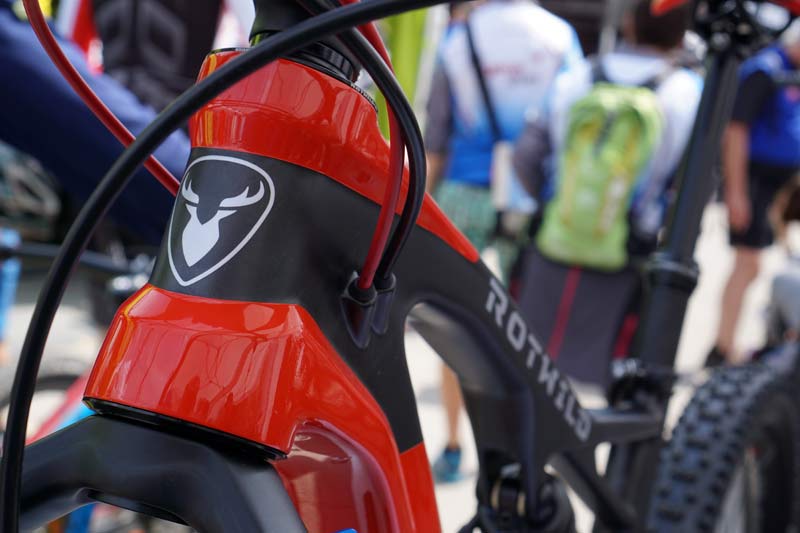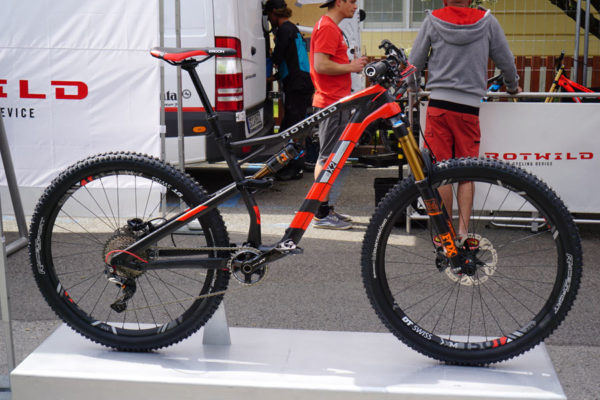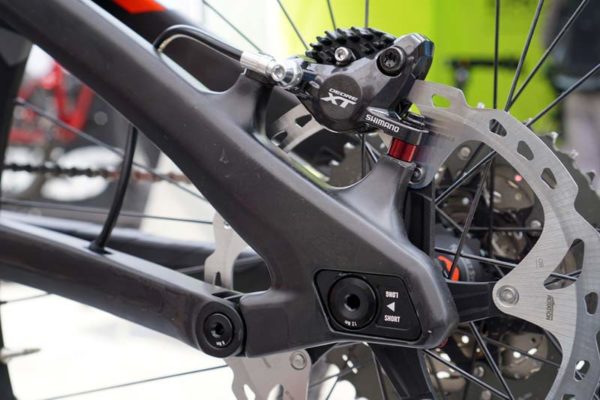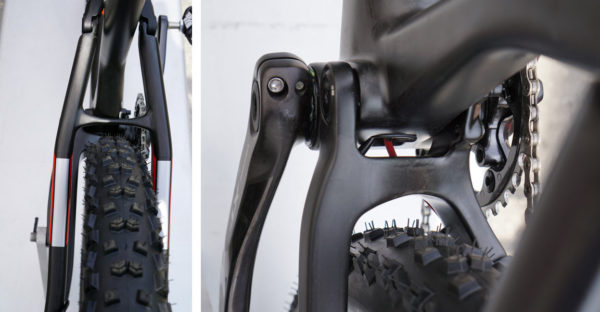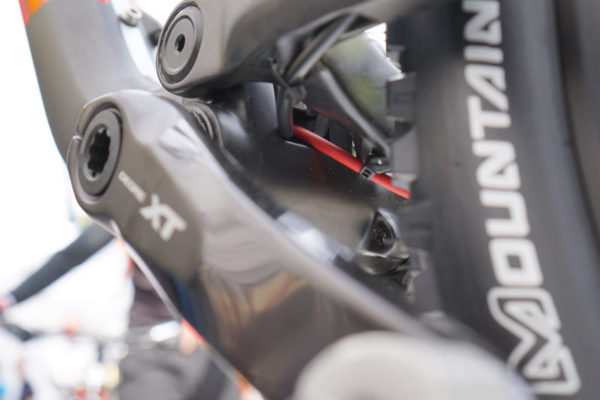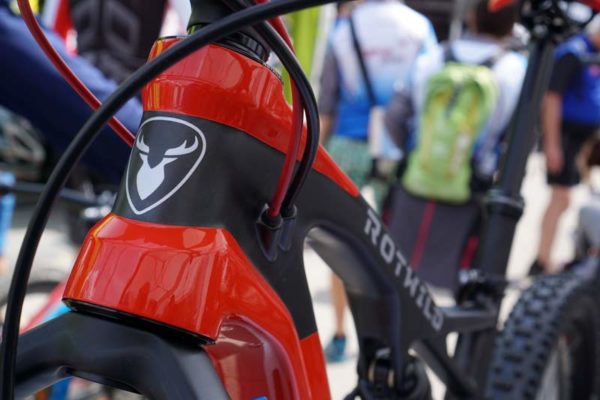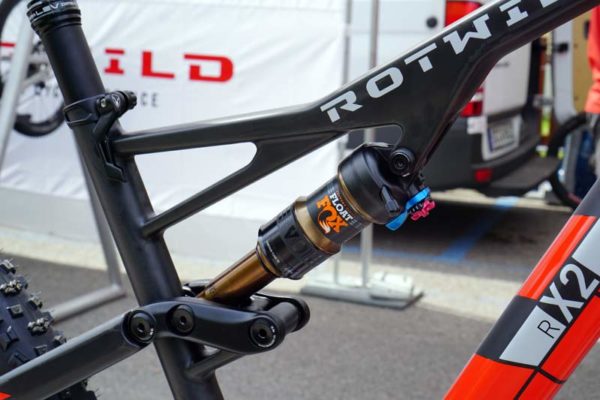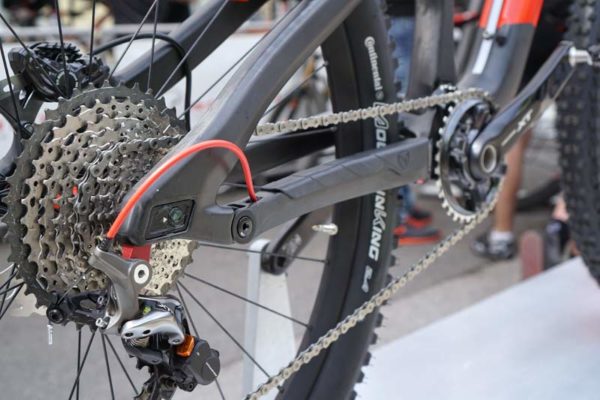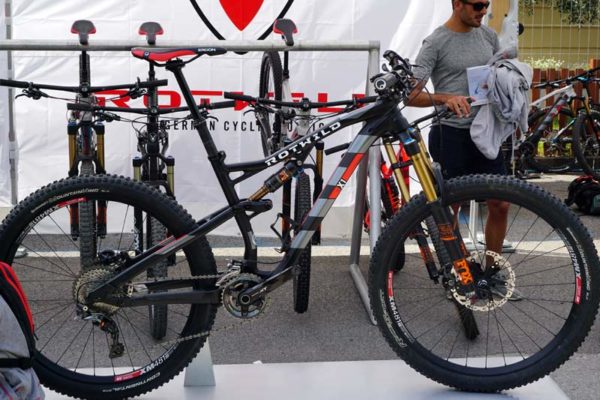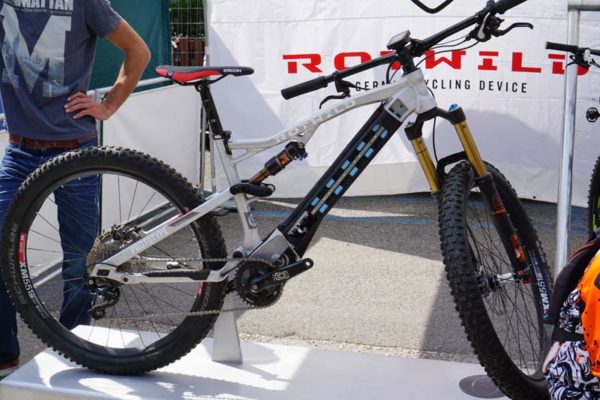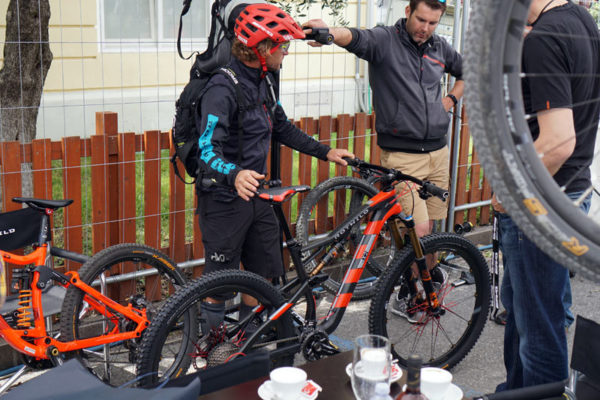
Introduced as a 140mm travel 27.5 / 27.5+ trail bike in alloy last summer, the R.X1 then got final spec listings at Eurobike. However, neither time did they indicate the bike would also work with 29er wheels. Now, with the new, lighter full carbon Rotwild R.X2 model, they say you can choose any of the three wheel and tire combos and run them all on the same frame and fork.
To do that, it uses their flip chip rear axle system that changes chainstay length by 12.5mm to make room for the two larger options, or tuck the rear end in with smaller 27.5″ wheels…or not, the shorter position works with some plus and 29er tires, too. And they you can mix and match without changing the geometry of the bike…unless you want to. A 1.5″ headtube fitted with an adjustable headset lets you deviate up to 1.5º from the stock 67º head angle.
As they put it, the industry is looking at different geometries, tire and wheel sizes, all trying to decide which is best for the rider. But they can’t know what’s best for everyone, so (we) created a multifunctional bike that lets the rider set it the way they want it…
The bike uses Boost 148 rear spacing combined with the adjustable chainstay length to accommodate the different tire sizes. The new carbon frame comes in a whopping 800g lighter than the alloy one, hitting a claimed 2,040g for size medium.
Chainstay length adjusts between 422.5mm and 435mm.
It’s shown here in the “short” chainstay position with a 27.5 x 2.4 tires. They say it’ll run up to 27.5 x 3.0, but they recommend a max 2.8 because that size’s handling characteristics are more in line with the “trail” design and geometry of the R.X series. And, personally, based on Continental tires’ narrower-than-normal sizing anyway, we’re thinking a true 3.0 would be a pretty tight fit.
Rear shift and brake lines run out of the frame just above the bottom bracket, directly in line with the bottom of the stays to create smooth, kink-free runs throughout the travel range.
The head angle can be adjusted +/-1.5º from it’s 67º starting point with the use of a different headset top cap. The move to a carbon frame not only made the bike lighter, but also let them make the headtube (steering) and bottom bracket (power transfer) sections stiffer.
Like the alloy bike, the rear-most pivot uses a double row of sealed bearings, and each of the three rocker pivot points all get full bearings for stiff, smooth articulation. The suspension is designed to be progressive -sensitive at the beginning without losing mid-stroke support, then ramping to prevent bottom out.
They’re offering four builds, differentiated not just by spec but also intended use. The “Trail” 27.5 builds are two, with a €4,699 Comp SLX/XT mix and a €5,499 Pro XT build that adds a KS Lev Integra dropper post and better wheels. Both use Fox Performance level suspension with the new GRIP damper. Next is the €5,499 27.5+ Pro “Traction” build that swaps in wider DT Swiss wheels and Schwalbe Nobby Nic 27.5 x 2.6 tires (and also bumps the front brake rotor from 180 to 203). At the top of the range is the €6,999 29er Evo “Transalp” build that gets a 1×11 XT Di2 group and upgrades to Fox Factory Kashima suspension for a claimed weight of just 11kg (24.25lb).
All three use a Fox 34 29er Boost fork, letting it work with all three wheel sizes, and a DPS Evol rear shock.
The alloy R.X1 presumably also now works with 29er wheels, too.
The R.X platform also comes in an e-bike version Unlike most e-MTB’s that use an aftermarket motor from Bosch or similar, Rotwild’s is must sleeker and hides the battery inside the downtube. The motor unit is designed such that there’s no extra space needed behind the crank spindle, which lets them use nearly identical pivot placement and geometry as their standard mountain bikes. Since we last saw it, they’ve updated the dealer software so riders can customize the three assist levels of the system to suit their terrain and fitness levels. At the max, it’ll deliver up to 320% of your effort, or as little as 125%.
